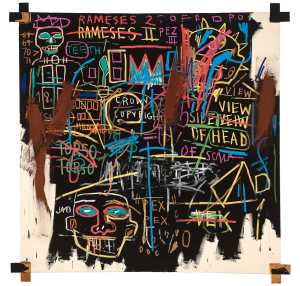Specifications
| Title | The Rope Dancer Accompanies Herself with Her Shadows |
|---|---|
| Material and technique | Vintage gelatin silver print on fibre-based paper |
| Object type |
Photograph
> Two-dimensional object
> Art object
|
| Location | This object is in storage |
| Dimensions |
Height 11,5 cm Width 8,5 cm |
|---|---|
| Artists |
Artist:
Man Ray
|
| Accession number | 3502 (MK) |
| Credits | Purchased with the support of Mondriaan Fund, 2002 |
| Department | Modern Art |
| Acquisition date | 2002 |
| Creation date | in 1928-1940 |
| Entitled parties | © Man Ray Trust / ADAGP, c/o Pictoright Amsterdam 2018 |
| Provenance | Nelly van Doesburg-Van Moorsel; Wies van Moorsel; on loan from the Cultural Heritage Agency of the Netherlands 1999-2002 |
| Exhibitions | Rotterdam 2017b |
| Internal exhibitions |
Surreëel: foto's uit de collectie van Museum Boijmans Van Beuningen (2011) Collectie - surrealisme (2017) |
| External exhibitions |
Dal nulla al sogno (2018) |
| Research |
Show research A dream collection - Surrealism in Museum Boijmans Van Beuningen |
| Literature | Penrose 1975, pp. 46-48, fig. 20 |
| Material | |
| Object | |
| Technique |
Gelatine silver print
> Bromide print
> Photographic printing technique
> Mechanical
> Planographic printing
> Printing technique
> Technique
> Material and technique
|
Do you have corrections or additional information about this work? Please, send us a message























